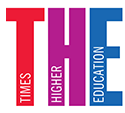War’s destruction is a chance for Ukraine to create a better higher education system, but security and funding will test rebuilders
As Russia’s invasion of Ukraine nears its fourth month, much of the focus remains on fighting and survival. When can we talk about the reconstruction of Ukrainian higher education?
“Now, I think, because we have to understand that reconstruction will be taking place in stages,” said Inna Sovsun, a professor at the Kyiv School of Economics and the National University Kyiv-Mohyla Academy.
Alongside tens of thousands of deaths and millions forced to flee to the relative safety of western regions, or beyond Ukraine’s borders, in the east at least four universities have been destroyed – in Luhansk, Donetsk, Kharkiv and Zaporizhzhia – and 25 damaged.
Kharkiv, the student capital of Ukraine, hosts 54 public and private higher education institutions, and it has been hit particularly hard. “In terms of physical damage, I think the most painful is the damage done to Kharkiv Karazin University, which is one of the best universities in Ukraine,” said Professor Sovsun, a former deputy education minister.
THE Campus resource: How universities can support refugee students and academics
If thoughts are soon to turn to academic reconstruction, how best can this be achieved? Ukraine could look abroad, with Tempus, a precursor to the European Union’s Erasmus mobility programmes, having proved its worth after the Yugoslav wars of the early 1990s, according to Ivanka Popović, rector of the University of Belgrade.
Projects sought to strengthen institutions and systems, creating international relations and technology transfer offices, strengthening central administration, improving student mobility and developing new bachelor’s and master’s programmes. “This was a systematic approach of the European Commission,” Professor Popović said. “You had people building bridges again, contacts, and exchanging experiences with colleagues from western Europe.”
But recovery has been hard. At the University of Sarajevo, buildings had been destroyed or lost across new borders. Years later, visa issues have dogged efforts to reverse brain drain, said Enita Nakaš, the institution’s vice-rector for international relations.
Ukraine dwarfs the western Balkans in the size and development of its higher education system. It is also fighting a very different war. Perhaps instead, lessons should be learned from Russia’s 2014 annexation of Crimea and its ongoing occupation of the Donbas.
In government at the time, Professor Sovsun said efforts to relocate universities have had mixed results. Donetsk National University has moved successfully, she said, but others had faced the “heart-breaking” prospect of uprooting again as front lines have shifted.
Nevertheless, she believes university reconstruction should begin in cities under Ukrainian control, such as Chernihiv. That will bring tough decisions for many. Buildings are a costly investment for a decimated economy, but people must also return to remake an institution.
After stopping completely in the first weeks of the invasion, by mid-March universities in most regions had resumed remote or mixed in-person teaching, often building on lessons learned from the pandemic.
No one yet knows what enrolment will look like in September. Kseniia Smyrnova, vice-rector for education at Taras Shevchenko National University of Kyiv, said volumes could be less than a third of previous years.
Few expect Ukraine’s international students to return without security guarantees, a blow for revenue. In addition, the parents of fee-paying domestic students may not be able to work, meaning some will have to pause their studies, said Denys Smolennikov, head of benchmarking and statistics at Sumy State University.
In April the government estimated the cost of damage to schools, colleges and universities to be more than $5 billion (£4 billion) and said the war could eventually cost the country at least $1 trillion, five times the value of all the final goods and services it produced in 2021.
Professor Sovsun, who is also an MP in the Ukrainian parliament, said there had been no political talk of a dedicated reconstruction fund for higher education, something that Sarajevo’s Professor Nakaš said was important when rebuilding housing and manufacturing are higher priorities.
But Professor Sovsun saw hope for a brighter future for her country. “With the whole societal structures being shattered with the war taking place right now, I think it’s a great chance for actually doing the reforms we have been afraid of doing for years,” she said.
A rejection of Russian-language journals and a reorientation towards Western collaborators would help to drive up standards, she said, although “for that, of course, the West will have to be open and patient”.
Universities’ development of trauma psychology curricula or military medicine courses “trains them how to be institutions that respond to demand which is changing so quickly”, a departure for many, she added.
Six of Ukraine’s public universities are in talks with the ministry and the European Commission to set up an Open Ukrainian University, partly modelled on a network of 32 universities that have been sharing and linking digital teaching materials since 2000 as the Virtual University of Bavaria. “There are some discussions on how it would work, and now we are searching for the capacities and experience,” said Professor Smyrnova.
Professor Sovsun said now was the time for Ukraine’s policymakers to be “supportive but tough”, pushing through long-neglected reforms and resisting the temptation to let quality assurance slip or a slide back to the status quo before the war. “What is all this fight for if we end up with bad quality programmes?” she said.


0 Comments